TRAPPIST-1 Planets - Flyaround Animation
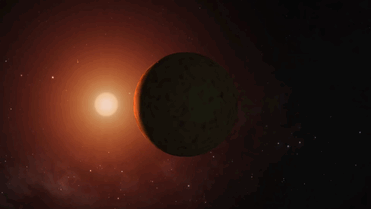
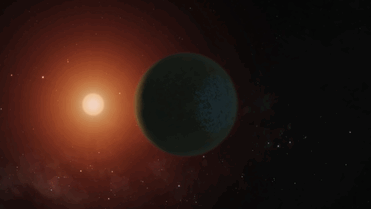
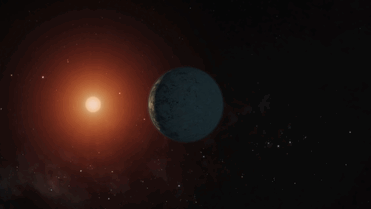
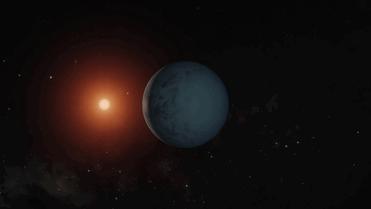


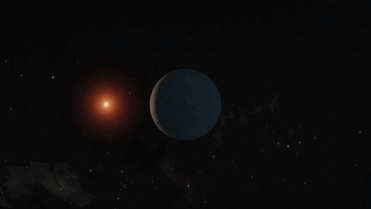
TRAPPIST-1 Planets - Flyaround Animation
Credit: NASA/Spitzer
More Posts from Hannahhaifisch and Others

Exhibition

2017 May 6
Galaxy Cluster Abell 370 and Beyond Image Credit: NASA, ESA, Jennifer Lotz and the HFF Team (STScI)
Explanation: Some 4 billion light-years away, massive galaxy cluster Abell 370 only appears to be dominated by two giant elliptical galaxies and infested with faint arcs in this sharp Hubble Space Telescope snapshot. The fainter, scattered bluish arcs along with the dramatic dragon arc below and left of center are images of galaxies that lie far beyond Abell 370. About twice as distant, their otherwise undetected light is magnified and distorted by the cluster’s enormous gravitational mass, dominated by unseen dark matter. Providing a tantalizing glimpse of galaxies in the early universe, the effect is known as gravitational lensing. A consequence of warped spacetime it was first predicted by Einstein a century ago. Far beyond the spiky foreground Milky Way star at lower right, Abell 370 is seen toward the constellation Cetus, the Sea Monster. It is the last of six galaxy clusters imaged in the recently concluded Frontier Fields project.
∞ Source: apod.nasa.gov/apod/ap170506.html

Picture of the longest Solar Eclipse we observed so far. It lasted up to six minutes and 39 seconds, a duration that will not be surpassed until 2132.
js

Where you will find me today { @ NASA } contemplating formations like ‘cloud streets’ like this activity over the Bering Sea | 📷via @explorenasa + NASA/Goddard | research for #spacelandings2017 #atmosphericresearch #newterrain #environment #sciencematters { cylinders of #spinning #air }
ESIST.Tech/tv/ recommends | Physics | CERN: The Big Bang Machine | https://esist.tech/tv/


“paper works”, Hannah Reber, 2013, Berlin



Fluorite
Locality: Okorusu mine, Otjiwarongo District, Namibia

Hexagons and rhombis spreading out

cube
-
 john-erby liked this · 1 month ago
john-erby liked this · 1 month ago -
 halfpoisonhalfgod liked this · 3 months ago
halfpoisonhalfgod liked this · 3 months ago -
 yes-brandeebleueaurelie reblogged this · 1 year ago
yes-brandeebleueaurelie reblogged this · 1 year ago -
 yes-brandeebleueaurelie liked this · 1 year ago
yes-brandeebleueaurelie liked this · 1 year ago -
 doctorwhich reblogged this · 1 year ago
doctorwhich reblogged this · 1 year ago -
 sparkyairstuff liked this · 3 years ago
sparkyairstuff liked this · 3 years ago -
 apatheticallyshook liked this · 3 years ago
apatheticallyshook liked this · 3 years ago -
 fallengraywolf liked this · 4 years ago
fallengraywolf liked this · 4 years ago -
 cernunnos1990 reblogged this · 4 years ago
cernunnos1990 reblogged this · 4 years ago -
 cernunnos1990 liked this · 4 years ago
cernunnos1990 liked this · 4 years ago -
 mystically-michaela liked this · 4 years ago
mystically-michaela liked this · 4 years ago -
 saneves-fan reblogged this · 4 years ago
saneves-fan reblogged this · 4 years ago -
 a-lc01 liked this · 4 years ago
a-lc01 liked this · 4 years ago -
 rebel-heart-gypsysoul liked this · 4 years ago
rebel-heart-gypsysoul liked this · 4 years ago -
 roxaub8 liked this · 4 years ago
roxaub8 liked this · 4 years ago -
 moonstar-magic liked this · 4 years ago
moonstar-magic liked this · 4 years ago -
 manuaani liked this · 4 years ago
manuaani liked this · 4 years ago -
 carnalreincarnated liked this · 4 years ago
carnalreincarnated liked this · 4 years ago -
 hellfighter8 reblogged this · 4 years ago
hellfighter8 reblogged this · 4 years ago -
 takenene reblogged this · 4 years ago
takenene reblogged this · 4 years ago -
 macieisnotreal reblogged this · 4 years ago
macieisnotreal reblogged this · 4 years ago -
 heyflowerface liked this · 4 years ago
heyflowerface liked this · 4 years ago -
 elbulto2 liked this · 4 years ago
elbulto2 liked this · 4 years ago -
 catmiau-u reblogged this · 4 years ago
catmiau-u reblogged this · 4 years ago -
 catmiau-u liked this · 4 years ago
catmiau-u liked this · 4 years ago -
 mainahaze reblogged this · 4 years ago
mainahaze reblogged this · 4 years ago -
 rougesisyphe liked this · 4 years ago
rougesisyphe liked this · 4 years ago -
 labyrinth-magic liked this · 4 years ago
labyrinth-magic liked this · 4 years ago -
 tenaciousasshole liked this · 4 years ago
tenaciousasshole liked this · 4 years ago -
 eseingsilva liked this · 4 years ago
eseingsilva liked this · 4 years ago -
 strwbrryliv reblogged this · 4 years ago
strwbrryliv reblogged this · 4 years ago -
 strwbrryliv liked this · 4 years ago
strwbrryliv liked this · 4 years ago -
 theacidicsquid liked this · 4 years ago
theacidicsquid liked this · 4 years ago -
 fly-away-from-here reblogged this · 4 years ago
fly-away-from-here reblogged this · 4 years ago -
 orangefireee liked this · 4 years ago
orangefireee liked this · 4 years ago -
 apbenji-blog1 liked this · 4 years ago
apbenji-blog1 liked this · 4 years ago -
 hiraethhh---18 liked this · 4 years ago
hiraethhh---18 liked this · 4 years ago -
 dalhiroce liked this · 4 years ago
dalhiroce liked this · 4 years ago